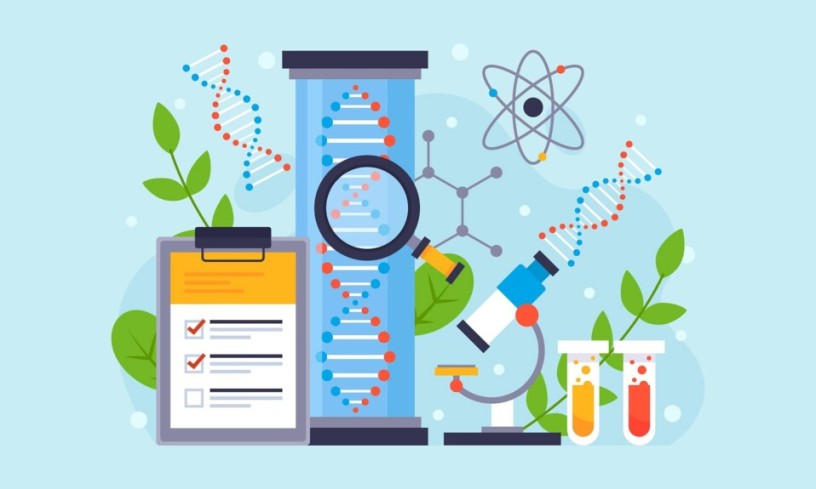Multi locus sequence typing (MLST) is a technique that has been used in food microbiology, to identify and track specific strains of microorganisms associated with foodborne disease outbreaks. MLST is a method of sequencing a defined set of genetic loci across the genome of a microorganism, which can be used to identify the specific strain of a microorganism.
MLST is still considered a useful technique in food microbiology, especially in some specific microorganisms such as Salmonella and Listeria, and it is often used in combination with other techniques, such as pulsed-field gel electrophoresis (PFGE) or whole genome sequencing (WGS), to provide a more complete view of the genetic makeup of a microorganism.
MLST is a powerful tool for tracking the spread of microorganisms in food chains and for identifying the source of food-borne outbreaks. It is also useful for monitoring the evolution of microorganisms, such as the emergence of new subtypes or strains. However, MLST also has some limitations, such as the need for large amounts of bacterial culture, the need for high-quality genomic DNA, and the subjectivity of band interpretation.
In recent years, WGS has emerged as a powerful alternative to MLST, as it allows for a more complete view of the genetic makeup of a microorganism and it has the ability to detect genetic variations at a higher resolution. WGS is faster, more accurate, and more cost-effective than MLST and it can be used to identify new strains or subtypes of microorganisms that may have different properties or behaviors.
Therefore, while MLST is still considered as a useful technique in food microbiology, it is being replaced by WGS as the primary method of subtyping microorganisms in food microbiology.
Pulsed-field gel electrophoresis (PFGE) is a technique that has been used in the past in epidemiological tracking of foodborne disease outbreaks. PFGE is a method of separating large DNA fragments using an electric field that is periodically changed in direction, which causes the DNA fragments to migrate through the gel in a random fashion. This results in a unique banding pattern for each strain of a microorganism, which can be used to identify and track specific strains of microorganisms associated with a foodborne disease outbreak.
PFGE is still considered a gold standard for subtyping certain bacteria such as Salmonella, Listeria and E. coli O157:H7. PFGE has been used extensively by public health laboratories to track foodborne disease outbreaks and to identify the sources of contamination. However, this method has some limitations, such as the need for large amounts of bacterial culture, the need for high-quality genomic DNA, and the subjectivity of band interpretation.
In recent years, Whole Genome Sequencing (WGS) has emerged as a powerful alternative to PFGE. WGS is a more high-resolution technique that can provide a more complete view of the genetic makeup of a microorganism. WGS is faster, more accurate, and more cost-effective than PFGE, and it can be used to identify new strains or subtypes of microorganisms that may have different properties or behaviors.
Therefore, while PFGE is still considered as a useful technique in epidemiological tracking of foodborne disease outbreaks, it is being replaced by WGS as the primary method of subtyping microorganisms in food microbiology.

Whole genome sequencing (WGS) is a powerful analytical technique that can be used in food microbiology to study microorganisms present in food. WGS involves sequencing the entire DNA of a microorganism, which provides a high-resolution view of its genetic makeup. This allows for a more complete understanding of the microorganism’s biology and its potential impact on food safety and quality.
Compared to other molecular techniques, such as PCR and MALDI-TOF MS, WGS has several benefits in food microbiology:
- High resolution: WGS provides a more detailed view of the genetic makeup of a microorganism, which can be used to identify new strains or subtypes of microorganisms that may have different properties or behaviors.
- Identification of virulence factors: WGS can be used to identify genes associated with virulence factors, such as toxins, that can cause food-borne illness.
- Detection of antibiotic resistance: WGS can be used to detect the presence of genes associated with antibiotic resistance in microorganisms present in food. This information can be used to monitor the spread of antibiotic-resistant bacteria in the food supply and to guide the development of new food safety measures.
- Identification of genetic diversity: WGS can be used to identify genetic diversity among microorganisms, which can be important for understanding the evolution and spread of microorganisms in food.
- Traceability: WGS can also be used to track the origin of food products, such as meat, dairy, and seafood, by identifying the specific microorganisms present at each step of the food production process.
- Phylogenetic analysis: WGS allows for the identification of relatedness among different microorganisms, providing a more accurate way of identifying the origin of outbreaks and also useful in tracking the spread of certain microorganisms in food chains.
- Comparative genomics: WGS also allows for the comparison of multiple genomes, enabling researchers to identify genetic changes that may have occurred in microorganisms, for example, adaptation to specific environments such as food matrices.
- Cost-effective: WGS is becoming more cost-effective due to the decreasing cost of sequencing. This makes it more accessible to a wider range of researchers and food industry professionals.


